London University (UK Parliament constituency)
London University was a university constituency electing one Member of Parliament (MP) to the House of Commons of the Parliament of the United Kingdom, from 1868 to 1950.
| London University | |
|---|---|
| Former University constituency for the House of Commons | |
| 1868–1950 | |
| Number of members | one |
Boundaries, electorate and history
This university constituency was created by the Reform Act 1867. The first election took place during the 1868 United Kingdom general election. The constituency returned one Member of Parliament, using the first past the post electoral system.
The constituency was not a physical area. Its electorate consisted of the graduates of the University of London. Before 1918 only male graduates qualified. From 1918 all graduates qualified, including women over thirty (reduced to twenty one when universal adult suffrage on equal terms was introduced before the 1929 United Kingdom general election).
The constituency was almost abolished in 1918. The original proposal of the Speaker's Conference, which considered electoral reform before the Representation of the People Act 1918 was enacted, was to combine all the English and Welsh universities except for Oxford and Cambridge into a three-member constituency. However, during consideration of the legislation it was agreed that London University should continue to return one member. The University of Wales was also given its own seat. The other universities, which were still to be combined, had their proposed representation reduced to two members. (Source: Pugh).
All the university constituencies were abolished in 1950, by the Representation of the People Act 1948.
Members of Parliament
This is a list of people who have represented this University in the Parliament of the United Kingdom between 1868 and 1950.
| Year | Member | Party | |
|---|---|---|---|
| 1868 | Rt Hon. Robert Lowe 1 | Liberal | |
| 1880 | Sir John Lubbock 2 | Liberal | |
| 1886 | Liberal Unionist | ||
| 1900 | Sir Michael Foster | Liberal Unionist | |
| 1903 | Liberal | ||
| 1906 | Philip Magnus | Liberal Unionist | |
| 1912 | Unionist | ||
| 1918 | Coalition Unionist | ||
| 1922 | Sir Sydney Russell-Wells 3 | Unionist | |
| 1924 | Sir Ernest Graham-Little 4 | Independent | |
| 1931 | National Independent | ||
| 1950 | Constituency abolished | ||
Notes:-
- 1 Lowe was elevated to the peerage as The 1st Viscount Sherbrooke.
- 2 Lubbock was elevated to the peerage as The 1st Baron Avebury.
- 3 Russell-Wells died on 14 July 1924 – the seat was vacant at dissolution.
- 4 Graham-Little, as an Independent MP, supported the National Governments in office from 1931 until the formation of the wartime coalition in 1940. He also supported Winston Churchill's caretaker government in 1945 and his proposed continuation in office if he had won the 1945 election. Graham-Little is therefore classified as a National Independent MP from 1931.
Elections
General Elections, from 1918 when most constituencies polled on the same day, were on different polling days from territorial constituencies. The polls for university constituencies were open for five days.
Coalition Conservative is considered to be equivalent to Conservative, as is National Independent equivalent to Independent.
|
1860s – 1870s – 1880s – 1890s – 1900s – 1910s – 1920s – 1930s – 1940s |
Elections in the 1860s
| Party | Candidate | Votes | % | ±% | |
|---|---|---|---|---|---|
| Liberal | Robert Lowe | Unopposed | |||
| Registered electors | 1,160 | ||||
| Liberal win (new seat) | |||||
- Appointed Chancellor of the Exchequer
| Party | Candidate | Votes | % | ±% | |
|---|---|---|---|---|---|
| Liberal | Robert Lowe | Unopposed | |||
| Liberal hold | |||||
Elections in the 1870s
| Party | Candidate | Votes | % | ±% | |
|---|---|---|---|---|---|
| Liberal | Robert Lowe | Unopposed | |||
| Registered electors | 1,485 | ||||
| Liberal hold | |||||
Elections in the 1880s
| Party | Candidate | Votes | % | ±% | |
|---|---|---|---|---|---|
| Liberal | Robert Lowe | 1,014 | 65.5 | N/A | |
| Conservative | Arthur Charles | 535 | 34.5 | New | |
| Majority | 479 | 31.0 | N/A | ||
| Turnout | 1,549 | 79.6 | N/A | ||
| Registered electors | 1,947 | ||||
| Liberal hold | Swing | N/A | |||
Lowe was elevated to the peerage as the 1st Viscount Sherbrooke, causing a by-election.
| Party | Candidate | Votes | % | ±% | |
|---|---|---|---|---|---|
| Liberal | John Lubbock | Unopposed | |||
| Liberal hold | |||||
| Party | Candidate | Votes | % | ±% | |
|---|---|---|---|---|---|
| Liberal | John Lubbock | Unopposed | |||
| Liberal hold | |||||
- Changed allegiance to the Liberal Unionist Party in 1886
| Party | Candidate | Votes | % | ±% | |
|---|---|---|---|---|---|
| Liberal Unionist | John Lubbock | 1,314 | 71.8 | New | |
| Liberal | Frederic Harrison | 516 | 28.2 | N/A | |
| Majority | 798 | 43.6 | N/A | ||
| Turnout | 1,830 | 71.0 | N/A | ||
| Registered electors | 2,579 | ||||
| Liberal Unionist gain from Liberal | Swing | N/A | |||
- Gain from the previous general election, hold from the change of allegiance
Elections in the 1890s
| Party | Candidate | Votes | % | ±% | |
|---|---|---|---|---|---|
| Liberal Unionist | John Lubbock | Unopposed | |||
| Liberal Unionist hold | |||||
| Party | Candidate | Votes | % | ±% | |
|---|---|---|---|---|---|
| Liberal Unionist | John Lubbock | Unopposed | |||
| Liberal Unionist hold | |||||
- Elevation to the peerage as the 1st Baron Avebury
Elections in the 1900s
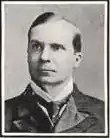
| Party | Candidate | Votes | % | ±% | |
|---|---|---|---|---|---|
| Liberal Unionist | Michael Foster | 1,271 | 46.8 | N/A | |
| Liberal | William Job Collins | 863 | 31.7 | New | |
| Independent Liberal Unionist | Edward Henry Busk | 586 | 21.5 | New | |
| Majority | 408 | 15.1 | N/A | ||
| Turnout | 2,720 | 61.8 | N/A | ||
| Registered electors | 4,403 | ||||
| Liberal Unionist hold | Swing | N/A | |||

| Party | Candidate | Votes | % | ±% | |
|---|---|---|---|---|---|
| Liberal Unionist | Michael Foster | Unopposed | |||
| Liberal Unionist hold | |||||
| Party | Candidate | Votes | % | ±% | |
|---|---|---|---|---|---|
| Liberal Unionist | Philip Magnus | 1,840 | 50.3 | N/A | |
| Liberal | Michael Foster | 1,816 | 49.7 | New | |
| Majority | 24 | 0.6 | N/A | ||
| Turnout | 3,656 | 70.1 | N/A | ||
| Registered electors | 5,212 | ||||
| Liberal Unionist hold | Swing | N/A | |||
Elections in the 1910s
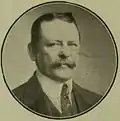
| Party | Candidate | Votes | % | ±% | |
|---|---|---|---|---|---|
| Liberal Unionist | Philip Magnus | 2,625 | 57.65 | +7.32 | |
| Liberal | Joseph West Ridgeway | 1,928 | 42.35 | -7.32 | |
| Majority | 697 | 15.30 | +14.64 | ||
| Turnout | 4,553 | 75.01 | +4.86 | ||
| Registered electors | 6,070 | ||||
| Liberal Unionist hold | Swing | +7.32 | |||

| Party | Candidate | Votes | % | ±% | |
|---|---|---|---|---|---|
| Liberal Unionist | Philip Magnus | 2,579 | 58.14 | +0.49 | |
| Liberal | Victor Horsley | 1,857 | 41.86 | -0.49 | |
| Majority | 722 | 16.28 | +0.98 | ||
| Turnout | 4,436 | 73.08 | -1.93 | ||
| Registered electors | 6,070 | ||||
| Liberal Unionist hold | Swing | +0.49 | |||
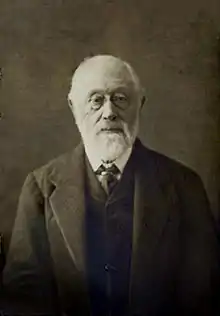
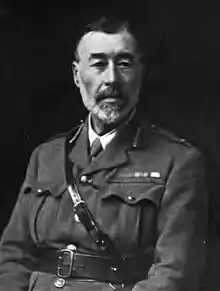
| Party | Candidate | Votes | % | ±% | |
|---|---|---|---|---|---|
| C | Unionist | Philip Magnus | 2,810 | 41.56 | -16.58 |
| Labour | Sidney Webb | 2,141 | 31.67 | +31.67 | |
| Teachers | Annesley Somerville | 885 | 13.09 | +13.09 | |
| Independent | Wilmot Herringham | 715 | 10.58 | +10.58 | |
| Independent Unionist | Charles Louis Nordon | 210 | 3.11 | +3.11 | |
| Majority | 669 | 9.89 | -6.39 | ||
| Turnout | 6,761 | 69.01 | -4.07 | ||
| Registered electors | 9,797 | ||||
| Unionist hold | Swing | N/A | |||
| C indicates candidate endorsed by the coalition government. | |||||
Elections in the 1920s
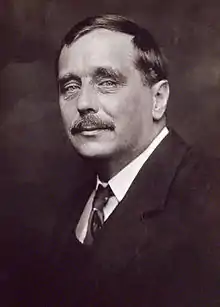
| Party | Candidate | Votes | % | ±% | |
|---|---|---|---|---|---|
| Unionist | Sydney Russell-Wells | 3,833 | 51.52 | +9.96 | |
| Liberal | Albert Pollard | 2,180 | 29.30 | +29.30 | |
| Labour | H. G. Wells | 1,427 | 19.18 | -12.49 | |
| Majority | 1,653 | 22.22 | +12.33 | ||
| Turnout | 7,440 | 67.64 | -1.37 | ||
| Registered electors | 11,000 | ||||
| Unionist hold | Swing | N/A | |||

| Party | Candidate | Votes | % | ±% | |
|---|---|---|---|---|---|
| Unionist | Sydney Russell-Wells | 4,037 | 50.15 | -1.37 | |
| Liberal | Albert Pollard | 2,593 | 32.21 | +2.91 | |
| Labour | H. G. Wells | 1,420 | 17.64 | -1.54 | |
| Majority | 1,444 | 17.94 | -4.28 | ||
| Turnout | 8,050 | 71.28 | +3.64 | ||
| Registered electors | 11,293 | ||||
| Unionist hold | Swing | -2.14 | |||
| Party | Candidate | Votes | % | ±% | |
|---|---|---|---|---|---|
| Independent | Ernest Graham-Little | 3,202 | 37.06 | +37.06 | |
| Unionist | John Bradford | 2,813 | 32.55 | -17.60 | |
| Liberal | Albert Pollard | 1,539 | 17.81 | -14.40 | |
| Labour | Frank George Bushnell | 1,087 | 12.58 | -5.06 | |
| Majority | 389 | 4.50 | N/A | ||
| Turnout | 8,641 | 72.03 | +0.75 | ||
| Registered electors | 11,997 | ||||
| Independent gain from Unionist | Swing | N/A | |||
| Party | Candidate | Votes | % | ±% | |
|---|---|---|---|---|---|
| Independent | Ernest Graham-Little | 5,869 | 53.5 | +16.4 | |
| Liberal | Walter Layton | 2,923 | 26.6 | +8.8 | |
| Unionist | Sir John William Gilbert | 2,179 | 19.9 | -12.7 | |
| Majority | 2,946 | 26.9 | +22.4 | ||
| Turnout | 10,971 | 70.5 | -1.5 | ||
| Independent hold | Swing | N/A | |||
Elections in the 1930s
| Party | Candidate | Votes | % | ±% | |
|---|---|---|---|---|---|
| National Independent | Ernest Graham-Little | 8,461 | 72.97 | +19.47 | |
| Independent National | Archibald Church | 3,134 | 27.03 | +27.03 | |
| Majority | 5,327 | 45.94 | +19.09 | ||
| Turnout | 11,595 | 70.27 | -0.25 | ||
| Registered electors | 16,501 | ||||
| National Independent hold | Swing | N/A | |||
| Party | Candidate | Votes | % | ±% | |
|---|---|---|---|---|---|
| National Independent | Ernest Graham-Little | 8,958 | 69.57 | -3.40 | |
| Labour | Norman Angell | 3,918 | 30.43 | +30.43 | |
| Majority | 5,040 | 39.14 | -6.80 | ||
| Turnout | 12,876 | 71.74 | +1.47 | ||
| Registered electors | 17,949 | ||||
| National Independent hold | Swing | N/A | |||
Elections in the 1940s
| Party | Candidate | Votes | % | ±% | |
|---|---|---|---|---|---|
| National Independent | Ernest Graham-Little | 7,618 | 50.49 | -19.08 | |
| Independent Progressive | Mary Stocks | 7,469 | 49.51 | New | |
| Majority | 149 | 0.98 | -38.16 | ||
| Turnout | 15,087 | 63.00 | -8.74 | ||
| Registered electors | 23,948 | ||||
| National Independent hold | Swing | N/A | |||
See also
- List of former United Kingdom Parliamentary constituencies
References
- Craig, F. W. S., ed. (1977). British Parliamentary Election Results 1832-1885 (e-book)
|format=requires|url=(help) (1st ed.). London: Macmillan Press. ISBN 978-1-349-02349-3. - Craig, FWS, ed. (1974). British Parliamentary Election Results: 1885-1918. London: Macmillan Press. ISBN 9781349022984.
Bibliography
- Boundaries of Parliamentary Constituencies 1885–1972, compiled and edited by F.W.S. Craig (Parliamentary Reference Publications 1972)
- British Parliamentary Election Results 1832–1885, compiled and edited by F.W.S. Craig (Macmillan Press 1977)
- British Parliamentary Election Results 1885–1918, compiled and edited by F.W.S. Craig (Macmillan Press 1974)
- British Parliamentary Election Results 1918–1949, compiled and edited by F.W.S. Craig (Macmillan Press, revised edition 1977)
- Electoral Reform in War and Peace 1906–18, by Martin Pugh (Routledge & Kegan Paul 1978)
- Who's Who of British members of parliament: Volume I 1832–1885, edited by M. Stenton (The Harvester Press 1976)
- Who's Who of British members of parliament, Volume II 1886–1918, edited by M. Stenton and S. Lees (Harvester Press 1978)
- Who's Who of British members of parliament, Volume III 1919–1945, edited by M. Stenton and S. Lees (Harvester Press 1979)
- Who's Who of British members of parliament, Volume IV 1945–1979, edited by M. Stenton and S. Lees (Harvester Press 1981)
- Leigh Rayment's Historical List of MPs – Constituencies beginning with "L" (part 3)